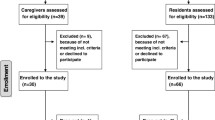Abstract
Objective: To examine the social psychological aspects of complementary therapy use in HIV/AIDS health care and to identify what happens in a person’s illness management process when incorporated into their care for HIV-related symptoms.
Methods: Grounded theory research method guided sampling, data collection and analysis with 21 males at various AIDS service organizations.
Findings: A grounded theory model Finding a Way to Live was developed. Participants experienced a six-stage process whereby the HIV served as a precondition for a profound self-transformation; a commitment to and rediscovery of the meaning of life. Complementary therapies, referred to as ‘tools’ by the participants, were cited as an integral part of how people living with HIV found wellness within their illness. The type of therapy, meanings attached to them, intention for and frequency of use corresponded to where individuals were in the six-stage process. As participants began to experience personal growth, the nature of the therapies shifted from those being highly tangible and focusing on the physical self to those facilitating inner awareness, such as meditation.
Conclusions: The process of integration was a complex, ongoing process wherein complementary therapies were an integral part of facilitating learning, self-discovery and ultimately, healing.
Résumé
Objectif: Étudier les aspects psychosociologiques du recours aux thérapies complémentaires dans le traitement du VIH/sida et définir les étapes du processus de prise en charge individuelle de la maladie lorsque ces thérapies sont intégrées dans le traitement des symptômes du VIH.
Méthode: Une méthode de recherche à base empirique a guidé l’échantillonnage, la collecte et l’analyse des données de 21 clients masculins de divers organismes de services aux sidéens.
Constatations: Nous avons élaboré un modèle théorique à base empirique (« Finding a Way to Live », ou « trouver moyen de vivre »). Les participants sont passés par six étapes où le VIH devait déclencher une autotransformation en profondeur, un engagement envers la vie et une redécouverte du sens de la vie. Selon les participants, les thérapies complémentaires, appelées « outils », font partie intégrante d’une recherche du mieux-être pour les personnes vivant avec le VIH. Le genre de thérapie, le sens qu’on y rattachait, l’intention visée et la fréquence d’utilisation variaient d’une étape à l’autre. À mesure que les participants commençaient à vivre une croissance personnelle, la nature des thérapies évoluait, passant des traitements physiques tangibles aux traitements favorisant la conscience de soi, comme la méditation.
Conclusions: L’intégration s’est faite selon un processus complexe et continu où les thérapies complémentaires ont joué un rôle clé vers l’apprentissage, la découverte de soi et, en bout de ligne, la guérison.
Similar content being viewed by others
References
Eisenberg DM, Davis RB, Ettner SL, et al. Trends in alternative medicine use in the United States, 1990–1997. Results of a follow-up national survey. JAMA 1998;280:1569–75.
Singh N, Squier C, Sivek C, et al. Determinants of nontraditional therapy use in patients with HIV infection: A prospective study. Arch Intern Med 1996;156:197–201.
Yates P, Beadle G, Najmen J, et al. Patients with terminal cancer who use alternative therapies: Their beliefs and practices. Sociology of Health and Illness 1993;15(2):199–216.
Dey, ID. Grounding Grounded Theory. Guidelines for Qualitative Inquiry. San Diego: Academic Press, 1999;249–67.
Glaser, BG. Theoretical Sensitivity. Mill Valley, CA: Sociology Press, 1978.
Morse JM, Field P. Qualitative Research Methods for Health Professionals 3rd ed. Thousand Oaks, CA: Sage Publications, 1995.
Paterson, BL. The shifting perspectives model of chronic illness. J Nursing Scholarship 2001;33(1):21–26.
Aldwin CM, Sutton KJ, Lachman M. The development of coping resources in people living with HIV. J Personality 1994;64(4):837–71.
Gloersen B, Kendall J, Gray P. The phenomena of doing well in people with AIDS. Western J Nursing Research 1993;15(1):44–58.
McCain NL, Gramling, LF. Living with dying: Coping with HIV disease. Issues in Mental Health Nursing 1992;13:271–84.
Reeves PM, Merriam SB, Courtenay BC. Adaptation to HIV infection: The development of coping strategies over time. Qualitative Health Research 1999;9(3):344–61.
Troop M, Easterbrooks P, Thornton S, et al. Reasons given by patients for “nonprogression” in HIV infection. AIDS Care 1997;9(2):133–42.
Barroso J. Long-term nonprogressors with HIV infection. Nursing Research 1994;48(5):242–49.
Ramsum D, Pope A, Mulkins A, et al. Complementary therapies for HIV management project: Art of Living with HIV. Ottawa: Health Canada, 2001.
Jensen LA, Allen, MN. A synthesis of qualitative research on wellness-illness. Qualitative Health Research 1994;4:349–69.
Beck, CT. Undergraduate nursing students’ lived experience of health: A phenomenological study. J Nursing Education 1991;30:371–74.
Best A, Glik D. Health services research and CAM: Research as a tool for integrative health services reform. In: Kelner M, Wellman B, Saks M, Pescosolido B (Eds.), Complementary and Alternative Medicine: Challenge and Change. Reading: Harwood Academic Publishers, 2000.
Author information
Authors and Affiliations
Corresponding author
Rights and permissions
About this article
Cite this article
Mulkins, A., Morse, J.M. & Best, A. Complementary Therapy Use in HIV/AIDS. Can J Public Health 93, 308–312 (2002). https://doi.org/10.1007/BF03405023
Received:
Accepted:
Published:
Issue Date:
DOI: https://doi.org/10.1007/BF03405023




